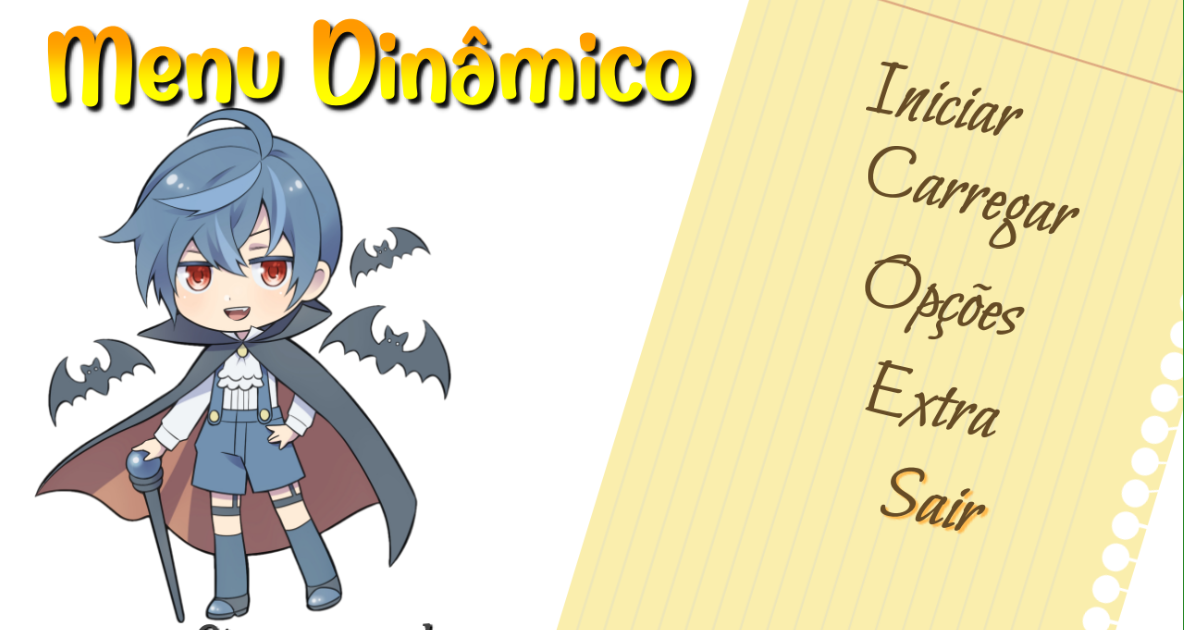
AddToSet ( set, value ) linkĪdds value to set. This may be a Python set or list, in whichĬase the value is appended to the list. This also works with lists, where key is the index at which SetDict ( dict, key, value ) linkĬauses the value of key in dict to be set to value. SetField ( object, field, value ) linkĬauses the a field on an object to be set to a given value. SetLocalVariable ( name, value ) linkĬauses the variable called name to be set to value in the current Object is the object, field is a string giving the name of theįield to set, and value is the value to set it to. SetScreenVariable() should be preferred, as it allows more This function is only useful in a screen that has been used byĪnother screen, as it provides a way of setting the value of a In a used screen, this action sets the variable in the context SetScreenVariable ( name, value ) linkĬauses the variable called name associated with the current screen This must be created in the context that the variable is set Of the screen containing the used one(s). To set variables within a used screen, and only in thatĬase, use SetLocalVariable() instead.

ToggleDict ( dict, key, true_value=None, false_value=None ) link One with dots separating the variable from fields, like "hero.strength" The name argument must be a string, and can be a simple name like "strength", or SetVariable ( name, value ) linkĬauses the variable called name to be set to value. Lists, in which case key is the index of the value to toggle. ToggleField ( object, field, true_value=None, false_value=None ) link Toggling means to invert the value when the action is performed. Value of that field when the action is performed. true_value If not None, then this is the true value we use. ToggleLocalVariable ( name, true_value=None, false_value=None ) link false_value If not None, then this is the false value we use. ToggleScreenVariable() should be preferred, as it allows more Toggles the value of the variable called name in the current local context. In - it can't be passed in from somewhere else. true_value If not None, then this is the true value used. ToggleScreenVariable ( name, true_value=None, false_value=None ) link false_value If not None, then this is the false value used. You can read more about the use statement on the official Ren’Py documentation here.Toggles the value of the variable called name in the current screen. Doing this not only keeps things organized, but allows you to use the screen in multiple places, like you can do here by combining the NVL and Basic fixes if you’re doing a NVL/ADV hybrid. It’s classified as a “control statement”, meaning that it’s a type of statement that controls screen elements, among other things.Įssentially, use is very useful for when you need to add another screen to an existing screen, like a menu (as we’ve seen here). The use statement is a part of Ren’Py’s screen language. Then, follow the rest of the steps for the basic fix. # config.narrator_menu is set to True, as it is above. # Displays dialogue in either a vpgrid or the vbox. It should now look something like this: screen nvl(dialogue, items=None): Navigate to the NVL screen area, and append use quick_menu to the screen called nvl(dialogue, items=None), not the screen called nvl_dialogue(dialogue). Tweaking for the NVL box is essentially the same-we just have to pay attention to where the use quick_menu bit goes. Tada! The quick menu now disappears with the Say window! NVL Fix Now, launch your game and test the window hide/show commands.


# the player has not explicitly hidden the interface.Ĭonfig.overlay_screens.append("quick_menu")
RENPY HIDE QUICK MENU CODE
# This code ensures that the quick_menu screen is displayed in-game, whenever

Textbutton _("Prefs") action ShowMenu('preferences') Textbutton _("Q.Load") action QuickLoad() Textbutton _("Q.Save") action QuickSave() Textbutton _("Save") action ShowMenu('save') Textbutton _("Auto") action Preference("auto-forward", "toggle") Textbutton _("Skip") action Skip() alternate Skip(fast=True, confirm=True) Textbutton _("History") action ShowMenu('history') # Ensure this appears on top of other screens. After doing so, it should look something like this. What you’re going to want to do is take the screen out of that if statement block, since you don’t really need it anymore. # If there's a side image, display it above the text. Your Say screen should now look a little something like this. At the very end of this screen, add use quick_menu. Make sure your project is not launched as well.įirst, navigate to your Say screen. Basic Fixįor all of these tweaks, we’re going to be working exclusively in the screens.rpy file, so open that up. But, oh no! When it hides, the quick menu is still there! You want everything gone when you hide that window. You want to hide the dialogue window for something.


 0 kommentar(er)
0 kommentar(er)
